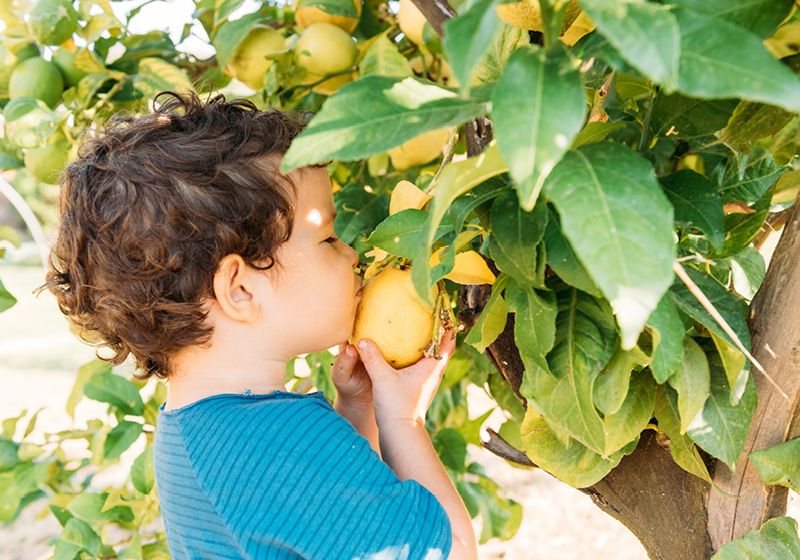Certain tastes and smells can bring back vivid, emotional memories from people’s childhoods, but scientists still don’t quite understand why or how.
In his million-word novel “In Search of Lost Time,” French author Marcel Proust described how a sip of lime blossom tea and a bite of madeleine cake transported him back to his childhood. Today, neuroscientists and psychologists still refer to such phenomena—how taste and smell can suddenly trigger vivid, emotional memories—as the “Proust effect.”
Taste and smell are intimately linked, said Venkatesh Murthy, a neuroscientist at Harvard University. As many people can attest, respiratory illnesses, which typically blunt the sense of smell, make most foods taste bland and unpalatable. This is because almost everything that people consider to be taste is actually flavor, which is a mix of taste and smell, Murthy explained. “When you chew, a lot of volatile molecules go through the roof of your mouth into the nose and stimulate the olfactory neurons.”
Does Smell Have a Special Ability to Evoke Memory?
“As a smell researcher, I hadn’t thought about it a lot, but many people have asked me this in the past few years,” Murthy said. “I don’t want to call it a fact or a myth. It’s somewhere in between.”
Venkatesh Murthy, a neuroscientist at Harvard University, works with mice to study how the brain processes and perceives smells.
Venkatesh Murthy
According to Murthy, people likely perceive smell as uniquely potent because unlike other senses, such as sight or sound, it can seem to evoke very old memories—particularly those from childhood—and this often feels sudden or unexpected. “I, too, feel that often,” Murthy said. “I’d smell jasmine, and here I am back in my childhood, bicycling at twilight in a small town in southern India.”
Comparing Proust and Murthy’s anecdotes, it’s clear that culture and personal experiences significantly influence the smells that bring about different memories. Very few smells are universally good or bad, Murthy said. For example, “For most, if not all, cultures, the smell of poop is not good. One theory is that humans have evolved to avoid indoles, the specific molecules associated with fecal smells, so people don’t go and eat it.”
Though the stimuli and memories vary, the sense of smell’s capacity to trigger people’s childhood memories seems to be universal. But how exactly does smell do this? “That’s the million-dollar question,” Murthy said. One popular theory, he said, is that compared to other sensory systems, the olfactory system has a short and direct path to brain regions associated with memory and emotions, such as the hippocampus, the amygdala, and the temporal lobe. “But this is just an idea—[there’s] very little evidence,” Murthy said.
He added, “Scientists are in the same boat as lay people now. We think that [the idea that smell is special] is very plausible, but what’s the evidence?”
How Do Scientists Study the Relationship Between Smell and Memory?
Although Murthy believes that it’s very difficult to scientifically disentangle the close link between smell and memory, he thinks that research using human subjects yields the most conclusive results. Yet, these kinds of experiments are also the hardest to design and execute because scientists must rely on people’s recollections.
In one such study in the early 2000s, Maria Larsson, a psychologist at Stockholm University, presented 93 people between 65 and 80 years old with visual, auditory, and olfactory cues.1 She then asked them 11 questions about the memories evoked by the different stimuli.
Larsson found that odor cues evoked memories from the first decade of life, while memories triggered by pictures and words were mostly associated with moments from early adulthood. Many individuals in the study also reported that odor cues provoked stronger emotions than their visual or auditory counterparts. However, the study didn’t provide any mechanistic details, so Murthy didn’t find its results conclusive enough to declare smell special in terms of evoking memories.
To get these answers, scientists, including Murthy, typically turn to animals such as mice. For instance, by training mice to associate specific scents with rewards or punishments, Murthy’s team identified the specific brain region and neurons that assign emotions to odors.2 But these types of studies have limitations too.
“How do I go and ask a mouse, what is the old memory [that] this thing evokes?” Murthy mused. “We can do very detailed analysis in animal models, but the final step of putting things together—what is it exactly that they’re perceiving—is a little bit hard, but we’re working on that,” he said.

